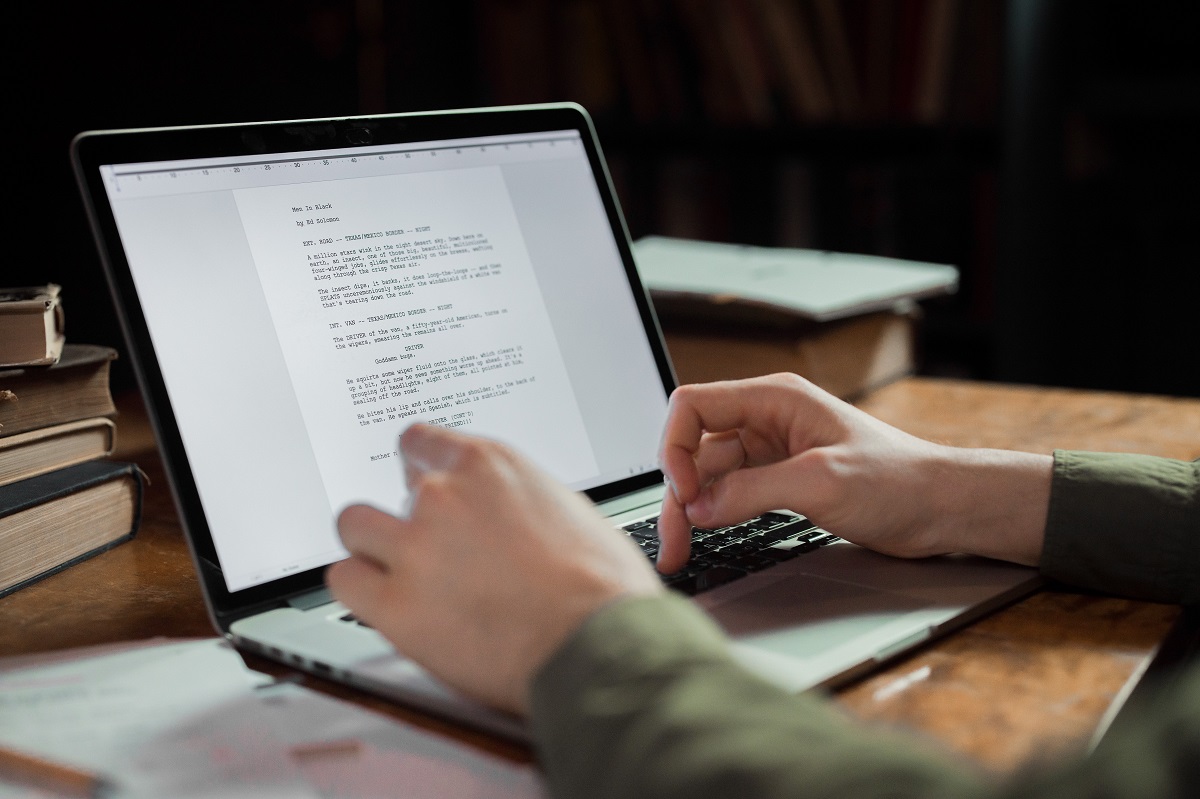Blockchain For Writers: What Are Literary NFTs?

We’ve heard about NFTs for gaming, NFTs for movie lovers, and the monetization of digital art via NFTs. So if one art form can harness the transformative power of NFTs… surely all of them can – including literature.
Technological advancements aren’t always viewed in a positive light by the literary world. And in some ways, that’s understandable. Televisions challenge the cultural authority of novels, while smartphones ruin our attention spans – they’ve essentially rewired our brains, creating short-term, dopamine-driven feedback loops. (That doesn’t really slot with sitting down to read a 600-page novel as well as it does with watching a 30-second TikTok video.) Even ebooks, which have done a lot to promote reading and literature, were initially feared to be bad news for the publishing industry.
While all these are legitimate concerns, it can sometimes come across that the literature world is rigid or opposed to progress and innovation. Just like the movie industry, publishing worlds tend to be exclusive, and often it’s the gatekeepers who fear change.
But then came NFTs.
So, can NFTs be used for books? Will we swap bookcases for the blockchain? Are there ways writers can use NFTs? Might NFTs be a new avenue through which writers can monetize and share their work while building an audience? And are we about to see the rise of the crypto writer?
That’s a lot of questions, we know. So let’s get stuck in.
What Are NFTs?
First things first, a refresher: NFT stands for non-fungible token. An NFT is a digital asset stored on the blockchain that can represent a digital item, a physical item, or both.
The secret sauce in NFTs really lies in the smart contract – a unique piece of code written onto the blockchain. The beauty of smart contracts is that they are self-executing. The terms of the agreement between the buyer and seller are directly written into the lines of code.
This is what allows NFTs to facilitate all those creator benefits that we can’t stop shouting about: think fractionalization (and therefore democratization) of ownership, and creator royalties enforced for secondary sales. More options for collectors, fans, and consumers, with greater benefits and fairer compensation for creatives and artists. Win-win!
It’s also what allows utility to be built into NFTs – facilitating NFTs as gig tickets, digital VIP access gateways, or even property deeds.

What Are Literary NFTs?
So, what are literary NFTs? Simply put, a literary NFT is a work of literature – a novel, a poem, or an article – minted directly onto the blockchain.
While some people are concerned that NFT books may further reduce access to public information, we’d err on the “glass half full” side. NFTs are already creating completely new ways to distribute and make literature – and we’re 100% here for it.
Let’s take a look at the benefits.
How Writers Can Use NFTs For Their Benefit
For writers, one of the biggest benefits of NFTs lies in the potential for artists to take control of the creative process. Authors can limit quantities of a release and shorten the period within which the NFTs are on sale, leveraging exclusivity to drive hype. NFTs also give writers the chance to develop deeper, more personal relationships with their audience and fanbase.
A novelist may not necessarily sell a book as an NFT. The NFT could be a piece of digital artwork inscribed with a certain passage or quote from the book. Buying the NFT could offer readers and fans access to exclusive perks or insider groups. For instance, some writers offer one-to-one, personalized feedback for fans trying to break into writing. Others offer behind-the-scenes exclusives – copies of original book drafts, or windows into their creative processes.
Take Blake Butler for example. Butler published his first book, Decade, in 2021, thirteen years after he wrote it. And how did he publish his debut novel? By turning it into a GIF of flashing pages, and then minting it as an NFT – of course! But why did Butler wait so long to publish his work?
Well, it wasn’t quite by choice. Commercial publishers rejected Butler’s work in 2008. According to them, the structure was too complex, the language too dense. But one man’s trash is another man’s treasure! It took less than 24 hours post-mint for someone to scoop up the Decade NFT for a cool 5 ETH – netting Butler over $7,500 at the time. Not bad for a single sale, we’d say.

NFTs And Poetry
It’s not just novel writers who are exploring the possibilities of NFTs. Back in the last bull market (ah, the glory days…. we remember them well!), a British poet made history by selling a single poem for over half a million dollars at a Christie’s auction in Manhattan.
Unsurprisingly, the work – which was a collaboration between writer Arch Hayes, contemporary visual artist Andres Reisinger, and musician RAC – instantly became the most expensive poem ever sold. At 102 lines long, each line sold for more than $5,000. This also marked the first time poetry was sold under the guise or category of “fine art” on the blockchain – pretty cool.
Unsurprisingly, there are lots of cool collectives and galleries springing up to support the NFT poetry revolution. Check out the theVERSEverse, a poetry NFT gallery “where text is art, poetry is technology + language is limitless”. Of their mission, theVERSEverse explains:
“We believe the act of reading is one of the closest forms of communion between two minds —that of author and reader … When individuals converse, there is mediation, interpretation, negotiation. Even a mind before a sculpture, a canvas, a digital image engages in an inner dialogue of interrogation, comprehension, valuation. Music gains narrative when lyrics are added. Films start with a script.”
But how does it work in practice? Well, theVERSEverse helps onboard acclaimed poets onto Web3, pairing them with crypto native artists to create unique works of blockchain-based poetry. The platform empowers writers creatively and financially, and educates collectors, curators, editors, and publishers on the future of literature on the blockchain.
As Matt Medved, co-founder and CEO of nft now, tweeted at the beginning of this year – “Literature NFTs will change the world”. And at Meta Hollywood, we can’t wait to see it!
Featured image by Ron Lach on Pexels
